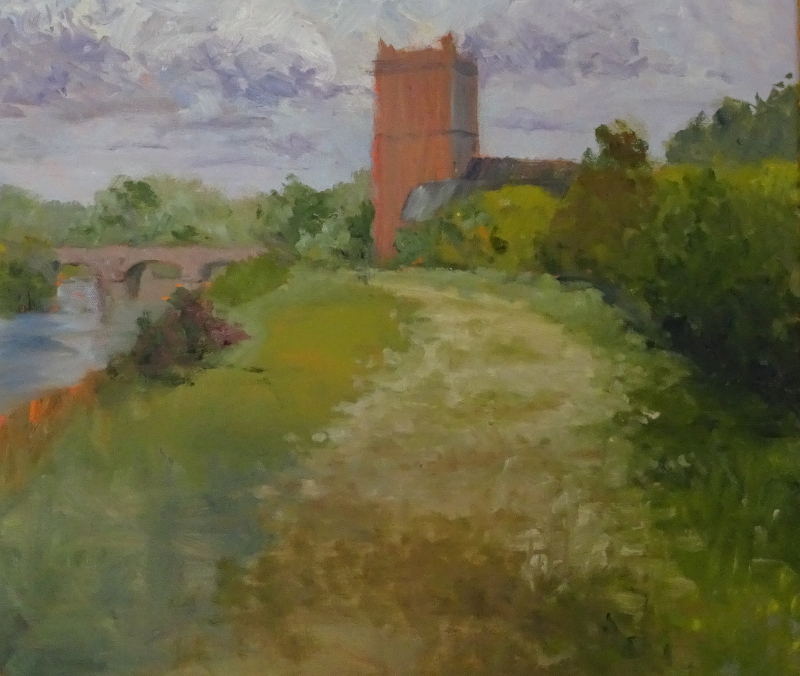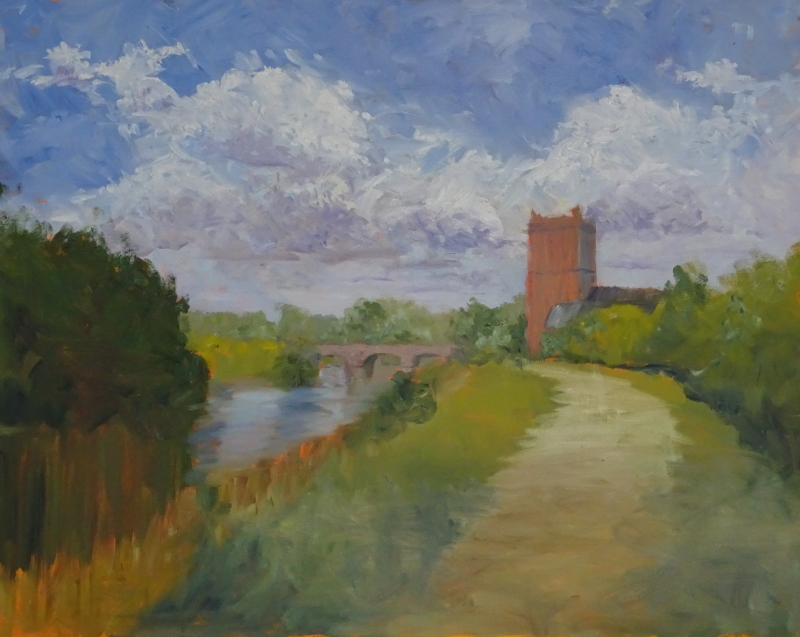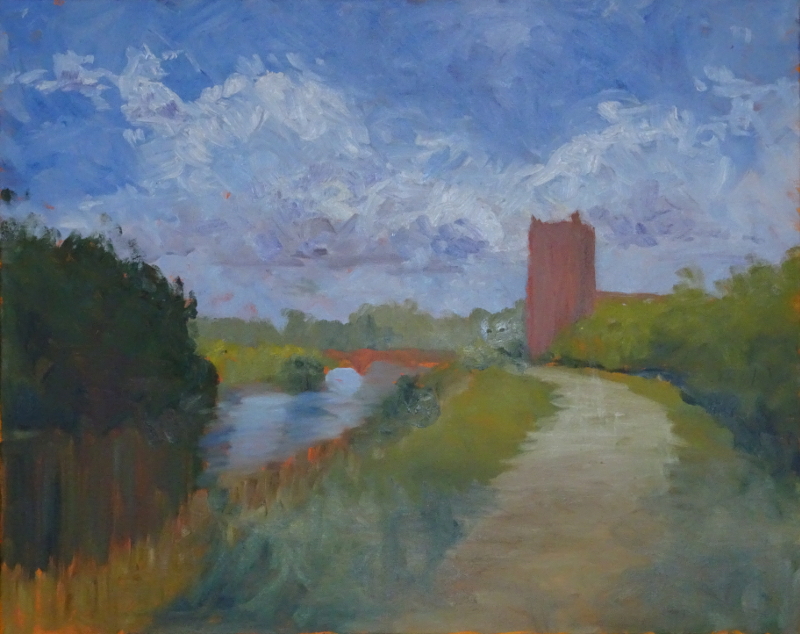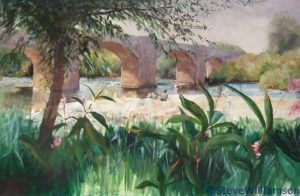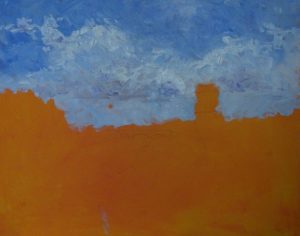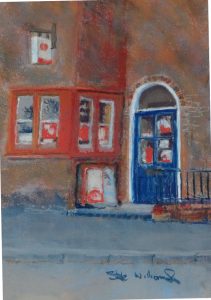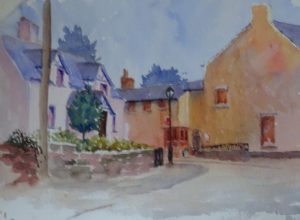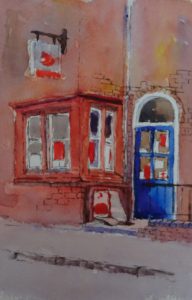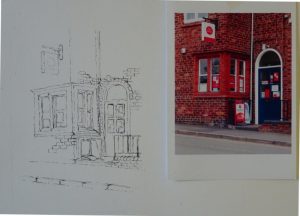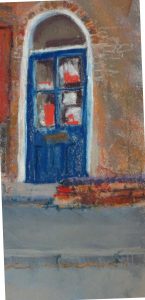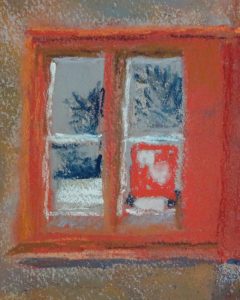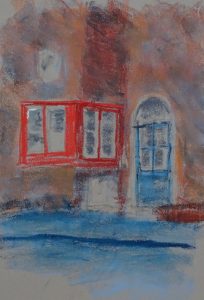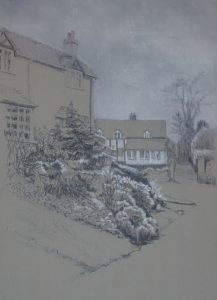I am enjoying this painting, especially as I have found my “wrestling place”. It’s the path. Before we go there, I want to relate what else I have been doing.
The bridge itself is coming to life, as is the tower. It’s the introduction of the yellow sandstone which has done the trick – it’s a brighter colour and is very much the signature of these buildings. The grass is cheerful though still a bit uncertain as to intensity. The dark bush on the left has more variation, showing the sunlight catching the dark foliage and the deeper darks characteristic of shadows in strong light. The bushes on the bank have come and gone and come again as I work on the dry reeds and the lush grass.
However, I changed the colour of the path, and I think I got it wrong! My thinking was that this is Wales not the Mediterranean so my favourite creamy ground with purple shadows would be too hot. This is a typical breezy, sunny day in North Wales, so blue grey should work with the sky and the water. But the painting died a little, so how about a different grey, or going back to what I had before? – no decision yet.
Moving on, in the hope that things will resolve themselves as I work up the rest of the painting, I looked at the margins of the water . The reeds had practically crossed the river so I reined them in, improving the water while I was at it. The two bushes now look the same size and shape – not good – but the extra work on the far bank and the bridge is opening up the view. I still don’t like the path.
. The reeds had practically crossed the river so I reined them in, improving the water while I was at it. The two bushes now look the same size and shape – not good – but the extra work on the far bank and the bridge is opening up the view. I still don’t like the path.

